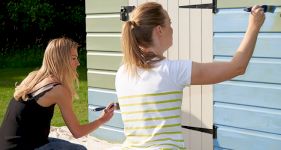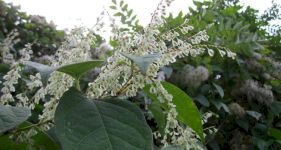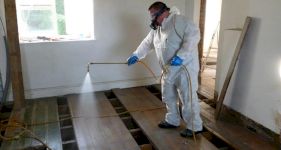Tree Trimming Cost
- The average cost of trimming trees is around £250 in the UK.
- Trimming a tree will typically take up to 1 day.
- A full breakdown of pricing information, including types of jobs and what's involved in such a task.
- How long the job will take, and a general overview of what types of work can be performed.
- How you can find a local tree surgeon with MyJobQuote.
Want an idea of tree trimming costs in 2025?
On average, UK homeowners should expect the cost of trimming a small or medium-sized tree to be around £250. If you're looking to prune a large tree or need more complex work done, then quotes will be higher than this.
Want to get a clearer idea of what to expect?
Every job is different, so the best way to find out what trimming a tree will cost is to get a few quotes from local tree surgeons using MyJobQuote. It's fast, free, and there's no obligation.
Tree surgeons often get booked up weeks (or months!) in advance, especially in spring and summer. It's worth planning ahead, even if your job isn't urgent.
Find our full tree pruning guide below!
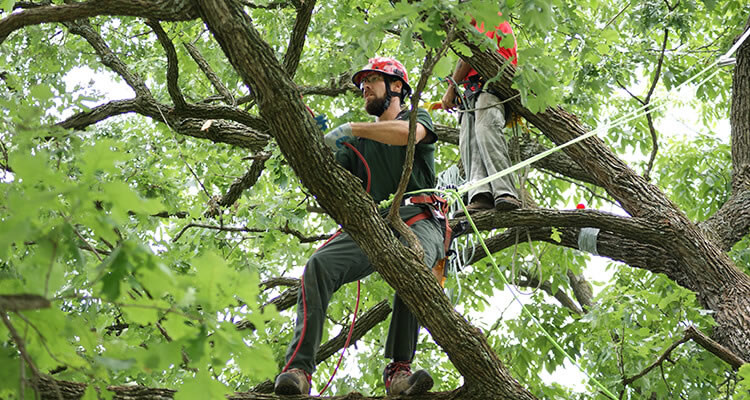
£250
Table of Contents
- How Much to Trim a Tree?
- Labour Costs and Timescales
- Additional Costs
- Cost Factors of Having a Tree Pruned
- What's Involved in Trimming a Tree?
- What Are the Benefits of Trimming a Tree?
- Can I Prune My Own Tree?
- Does My Tree Need Trimming?
- Types of Tree Trimming
- Type of Tree
- When to Prune Trees
- Removing Tree Costs
- Bird Nesting Seasons and Tree Trimming Regulations
- Checklist: Finding & Hiring a Tree Surgeon
- FAQs
- Sources
How Much to Trim a Tree?
Correctly trimming a tree requires training and specialised equipment. It can also be dangerous work. It's always best to leave tree trimming to a professional tree surgeon.
For most UK homeowners, the cost of hiring a tree surgeon to trim a small or medium-sized tree is around £250.
However, this is just the baseline. Quotes vary a great deal depending on the size of the tree and how complex the work is.
For instance, pruning fruit trees and common garden trees is typically not expensive. You might receive quotes which are as low as £120 if it's something that can be tackled in a couple of hours.
Homeowners sometimes delay getting their trees trimmed, assuming it'll be expensive. But getting quotes from local tree surgeons could show it's much more affordable than you thought.
How much does it cost to trim a small 2 to 3 metre tree and a tall 8 to 10 metre tree?
Tree Cutting Prices
The type of trimming combined with the size of the tree is one of the biggest factors to consider when getting a tree trimmed. For ease of comparison, it is assumed that the trees are in a moderate condition of upkeep.
| Type of Job | Tree Size | Average Cost |
|---|---|---|
| Crown Lifting | Small | £300 – £350 |
| Crown Lifting | Large | £500 – £850 |
| Crown Trimming | Small | £500 – £750 |
| Crown Trimming | Large | £750 – £1,600 |
| Dead Wooding | Small | £450 – £750 |
| Dead Wooding | Large | £750 – £1,500 |
| Directional Pruning | Small | £250 – £350 |
| Directional Pruning | Large | £500 – £750 |
| Pollarding | Small | £450 – £750 |
| Pollarding | Large | £750 – £1,200 |
| Crown Reduction | Small | £2,200 – £3,200 |
| Crown Reduction | Large | £4,200 – £5,500 |
Pruning by Type of Tree
The cost to have seasonal pruning carried out usually depends on the type of tree. For comparison, this assumes all the trees are average-sized full-grown trees that have been maintained to a reasonable standard.
| Type of Tree | Average Cost |
|---|---|
| Apple | £180 – £220 |
| Plum | £120 – £180 |
| Bay | £350 – £400 |
| Magnolia | £220 – £270 |
| Cherry | £350 – £400 |
| Fig | £180 – £220 |
| Olive | £220 – £270 |
| Pear | £180 – £220 |
| Lilac | £120 – £180 |
Labour Costs and Timescales
When you are getting work done on your trees, there are a lot of factors that decide the final cost you will be paying.
The easiest way to determine the cost is to consider how long it will take and what the going rate is for tree surgeons.
Labour Costs
The table below shows how much a tree surgeon costs per hour and day.
Keep in mind that tree surgeons often work in teams of 2 or 3, as it helps them to prune trees more efficiently and safely.
| Time Period | Team size | Average cost |
|---|---|---|
| Per hour | 1 | £50 – £60 |
| Per hour | 2 | £100 – £120 |
| Per hour | 3 | £150 – £180 |
| Per day | 1 | £300 – £350 |
| Per day | 2 | £500 – £750 |
| Per day | 3 | £750 – £1,100 |
Timescales
Below are some typical timescales for the pruning of single trees. If the tree is large or you have multiple trees to prune, it will take longer, and your overall tree pruning cost will be higher.
| Type of Job | Duration |
|---|---|
| Crown Lifting | Up to 1 day |
| Crown Trimming | Up to 1 day |
| Crown Reduction | 1 – 2 days |
| Dead Wooding | Up to 1 day |
| Directional Pruning | Up to 1 day |
| Pollarding | 1 – 2 days |
| General Pruning | Up to 1 day |
Additional Costs
One way to reduce part of your tree trimming price is to combine the work with other jobs that also need doing. Of course, there are also costs that might arise, which will raise the tree pruning price. Here are some things to keep in mind
Tree Survey
If you have a large number of trees in your garden, it might be worth having a tree survey done. This will give you an idea of the condition of your trees and will identify any problems before they occur. This can include things like roots interfering with foundations. A typical tree survey costs £350 to £450.
Tree Stump Removal
Old tree stumps can ruin the appearance of your garden, plus any roots may get in the way of further development. Often, tree stumps are removed at the time a tree is felled, but if you have one or more left on your property, the cost to remove a tree stump is usually between £150 and £350.
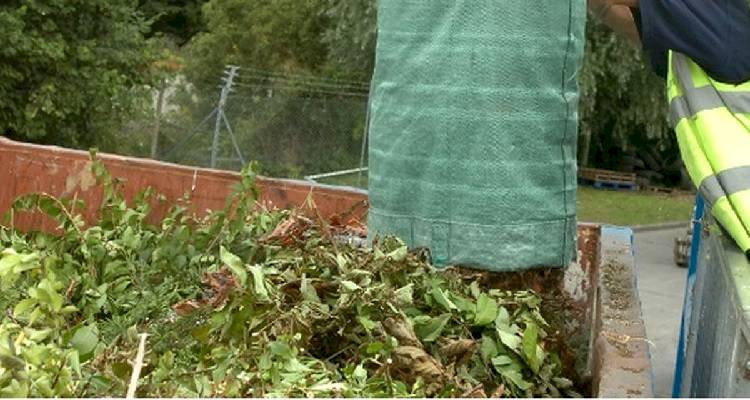
Garden Maintenance Costs
Garden maintenance might be something to consider at the same time as you are looking to get your trees trimmed. Depending on the scale of the work, a maintenance gardener may be able to trim and prune your trees as part of tidying up your garden. The average cost for a maintenance gardener is £200.
Garden Waste Removal Costs
Garden waste removal is a job that you might want to combine with getting your trees trimmed. Rather than paying your tree surgeon to remove the waste, they generate you could bundle it in with getting other parts of your garden cleared. The average cost of garden waste removal is £200.
We have a dying (decay in trunk) mature TPO oak approx. 7m from a conservatory on a raft foundation. We're on clay soil. Both an arborist and tree surgeon have advised to have the tree felled sooner rather than later. An application has been made to the LA. Given the tree is on clay, I understand removal could cause the clay to re-hydrate and cause heave on the conservatory foundations. Thoughts?
Cost Factors of Having a Tree Pruned
There are a lot of factors that go into working out tree pruning costs. This is why good tree surgeons won't give you a quote without seeing the tree on site.
To give you some idea of what factors can affect the final cost, here are some of the main considerations:
- Tree size - Tall trees are more dangerous to work with. If your tree surgeon needs to climb the tree with a harness, then you will likely be looking at a minimum cost of £200.
- Number of trees - If you have multiple trees in need of care, then the cost per tree will likely be lower.
- State of tree - If you regularly get your trees trimmed and pruned, then the costs will be lower each time. However, if your trees have been neglected and need a lot of work, then the costs will be higher.
- Trimming type - Different types of trimming are more labour-intensive and more dangerous, so they will cost more.
- Accessibility - The tree surgeon will need to be able to get to the tree with all of their equipment and remove any waste that's created. If the tree is located in a hard-to-access area, the job will likely take longer.
- Location - The harder it is for the tree surgeon to control the branches that are trimmed, the more it will cost, as there will be more safety considerations.
- Waste Removal - Tree surgeons will often be responsible for removing all waste from the site. The more that is created, the more this will cost.
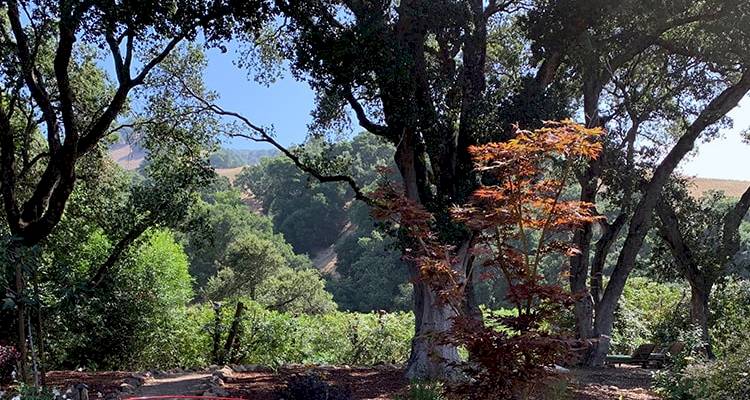
Tree surgeon prices will factor in all of these elements when they provide a tree pruning quote. Overall, they care about how long it will take to complete the job and price their services based on that.
What's Involved in Trimming a Tree?
The basic principles of trimming or pruning trees are quite easy. Branches, stems, or buds are cut away from the main plant.
Before any tree cutting is done, the whole plant should be assessed, and the main branches identified, as it is not a good idea to cut these. Then any diseased or damaged branches are identified and chosen for pruning.
If the branch or bud is small, secateurs may be used. For thicker branches, a tree saw may be needed. For the largest trees, a chainsaw may be the only option.
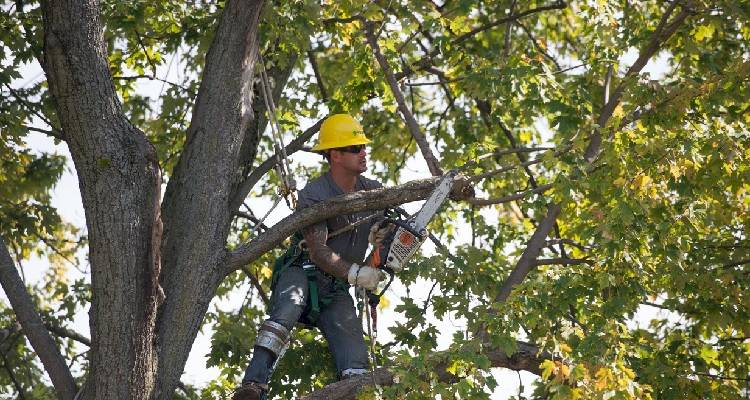
When cutting a branch, the first cut is made about 50cm away from where the final cut will be. A cut is made on the bottom of the branch and only penetrates about halfway through. Then the rest is cut away from the top. Once the bulk of the branch has dropped away, the final piece is cut off with care.
Depending on where the branches are that need cutting, it may be necessary to climb the tree. Ladders can be used for smaller trees. For large trees, tree surgeons will use a harness to climb the tree so that they can work on it.
What Are the Benefits of Trimming a Tree?
There are several reasons to consider trimming your trees. Often, the tree pruning benefits can make the expense worthwhile.
Here are some examples:
- Improve tree health - Trees that are not trimmed can grow to be unhealthy, especially those that stand on their own. This is because trees that are not competing for light can sometimes grow out of control.
- Improve appearance - Healthy trees generally look better than diseased or misshapen ones. In addition, tree pruning will allow you to shape trees in a way that suits your garden.
- Detect disease or other problems - Regular tree pruning can help detect any signs of disease before they become major concerns. This may make it cheaper to deal with the problems by acting early.
- Prevent property damage - Large tree roots can encroach on your house's foundations and cause damage to the property. Similarly, falling branches can be a hazard, and regular tree maintenance can reduce these issues.
- Improve views - If trees grow too large, they can begin to obscure your views of your surroundings. If this is something you wish to avoid, it's worthwhile keeping on top of tree pruning and preventing your trees from getting too tall.
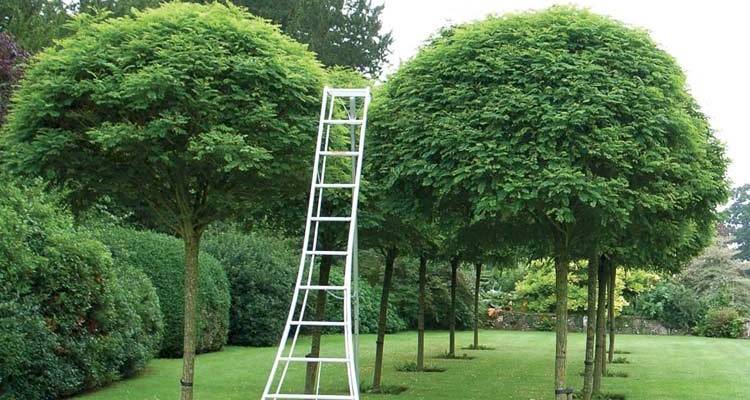
Weighing up the tree surgeon costs against the potential costs if something goes wrong with a diseased or dangerous tree can help you decide whether the expenditure is worth it.
What is the best time of year to have a tree pruned?
Can I Prune My Own Tree?
If your tree is small, and you can easily reach the branches in need of pruning with a ladder, then there is no reason not to DIY your tree pruning. Fruit trees, for example, are easy to maintain yourself.
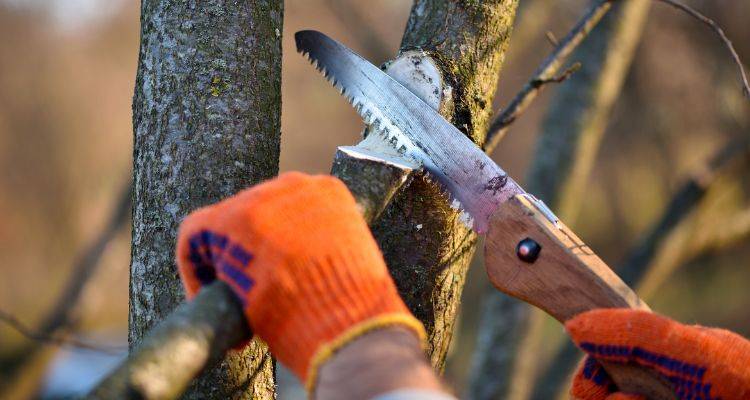
Here are the tools and equipment you may need to trim a tree yourself:
- Pruning shears/secateurs - A handheld tool useful to cut back small branches and twigs.
- Tree loppers - Used for extended reach and leverage to access high, thick branches.
- Pruning saw - A larger tool to cut large, thick branches that are too big for loppers.
- Bow saw - When pruning saws aren't cutting it, use a bow saw to chop hardwood branches.
- Protective gear - As well as the tree trimming tools, you'll also need protective gloves, safety glasses, and a helmet to protect yourself from any debris.
Large trees should always be left to professionals. Removing branches from a tall tree is dangerous work.
There are inherent dangers and risks associated with DIY tree trimming. Failure to understand tree behaviour when cutting off broken limbs can result in serious injuries or even death. Similarly, using the wrong tree trimming tools or using blunt or faulty tree care equipment can cause you to lose control of your equipment when pruning.
Working at height also carries personal injury risk, as well as the potential of damaging your property or nearby structures if branches fall onto them.
The tree's health may also be at risk, as improper pruning techniques can lead to disease, decay, or damaged structural stability.
If you are in doubt, it's best to hire a tree trimmer instead of tackling tree pruning yourself.
Does My Tree Need Trimming?
Sometimes trees are trimmed just to change the way they look. However, some signs indicate your tree should be trimmed for safety reasons and for the health of the tree.
Broken Branches
Broken branches should be removed as soon as possible. Once a branch becomes broken, it will gradually weaken until it drops. When this happens, it can cause injury or damage to property.
Misshapen Tree
A misshapen tree can look unique and appealing, but it can be a sign of a diseased tree. If the weight of the tree is distributed unevenly, this can lead to broken branches.
Dead or Diseased Limbs
Dead limbs should be removed before they fall, as they are a safety risk. Diseased limbs can also fall and should be removed before the disease spreads.
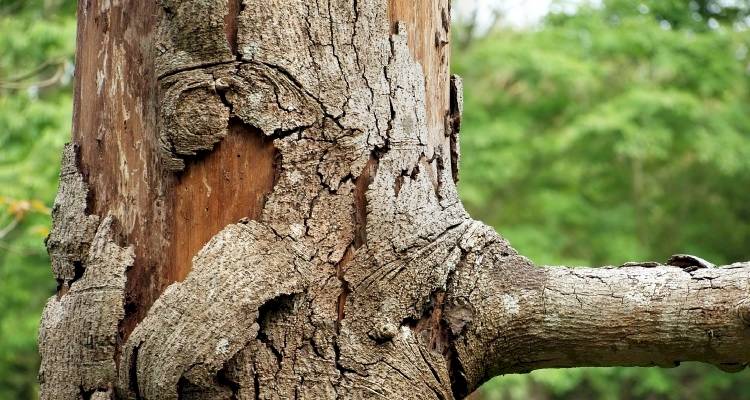
Dangerous Branch Growth
If branches are growing in dangerous locations, they should be removed. This should ideally happen before it becomes a problem. A prime example of this is branches growing above power lines or over your roof.
Weak Branches
Weak branches are risks for falling. Signs of this are that they are a different colour from the rest of the tree. They may also be snapped in places.
Too Much Growth
Trees that are planted with nothing else around them will often grow very quickly. Without the need to compete for sunlight, they will grow faster than is healthy. If your tree starts to grow a lot, it is better to trim it. This will prevent it from becoming too heavy for its root system to support.
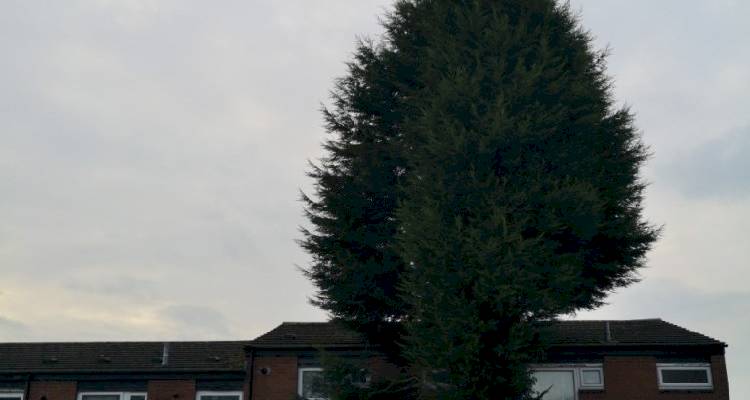
Cracks in Bark
Cracks in the bark are a sign of either disease or infestation. If left untreated, the whole tree will die. These branches should be pruned as soon as possible to save the tree.
Dense Trees
If you can't see the individual branches in your tree, then it is too dense. Trees like this are dangerous because the internal branches can begin to die from a lack of sunlight. If a dense tree falls in a storm, it can cause a lot of damage.
Crossing Branches
If the branches on your tree are crossing, then it is time to get it trimmed. Crossing branches are unhealthy and will often die and decay if left. It is best to prune them early while it is easy.
Types of Tree Trimming
If you need a tree trimming service, then you should first know about the different types of tree trimming that are possible. The cost of trimming a tree will depend on what sort of trimming is required.
Crown Lifting Costs
Crown lifting is when the lower branches of a tree are removed. This is done for a variety of reasons. This includes removing hazardous low branches. Low branches can just be in the way. They can also become weak if they don't get enough sunlight, which can lead to them falling and causing injury.
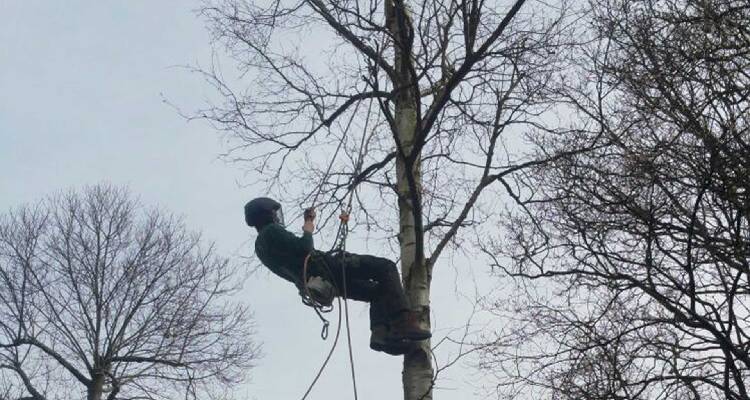
Whenever you are considering tree trimming costs, a lot depends on the exact circumstances of the tree. Usually, though, crown lifting takes around a day to complete, so you can expect to pay £300 to £850.
Crown Thinning Costs
Crown thinning is used to remove branches from trees that are becoming too heavy. This usually focuses on removing crossing branches, as well as weak and diseased ones. The process should remove no more than 1/3 of the leaf-bearing branches from a tree.
The cost of trimming a tree in this way will heavily depend on the type of tree. It will often require the tree surgeon to work with a harness at the top of the tree, so the price will reflect this. You can expect to pay £400 to £1,400.
Crown Reduction Costs
Crown reduction is a dangerous type of tree trimming. It is usually a last resort. It is where the top of the tree is taken off. Usually, around 20% to 30% of the crown is removed. This is done when the tree has outgrown the space it has. Or if its roots are becoming too large.
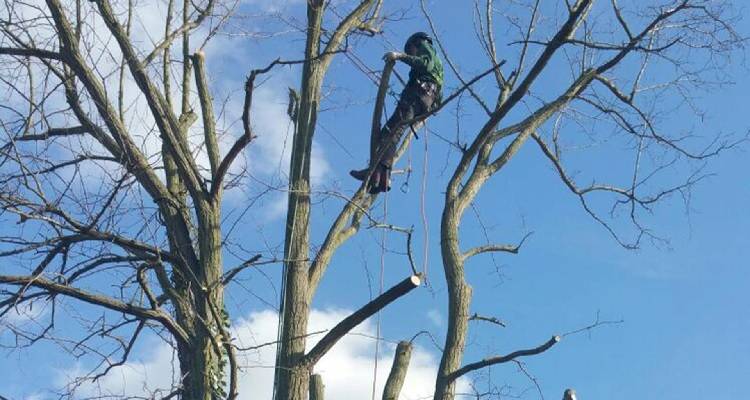
Crown reduction is a big job. It can be complicated by the surroundings of the tree; due to the nature of the job, you can expect to pay a premium for this service. Crown reduction tree trimming prices usually start at around £2,200.
Dead Wooding Costs
Dead wooding is the removal of dead branches. This may be due to a lack of light reaching these branches, disease or the result of a lightning strike. Dead wood should be removed asap as it can fall and cause injury or damage to property.
The cost of dead wooding will depend on the tree type, location and number of dead branches. Costs will usually be between £450 and £1,500.
Directional Pruning Costs
Directional pruning is used to manage the growth of trees. It is often used to stop them from growing towards power lines. It involves removing branches that are growing in an unwanted direction. They are cut in such a way as to prevent new growth.
Directional pruning costs will depend on the type of tree and its location. Prices will usually be £250 to £750.
Pollarding Costs
Pollarding can be used to refer to a couple of different types of pruning. The end result is a tree that is smaller than it would naturally grow. It can refer to trimming the top from a young tree or removing most of the branches from an older tree.
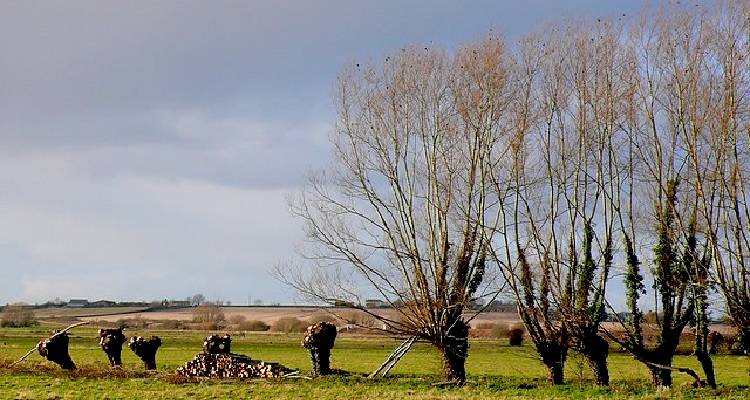
The cost of this type of tree trimming is usually around £450 to £1,200. But this will vary depending on the size and location of the tree.
Type of Tree
Different types of trees thrive under different types of care. Here’s some guidance for some of the most popular types of trees.
Apple Tree
Here are some of the key things you need to know about how to prune an apple tree. The pruning should be done between November and March.
You should aim to remove around 10% to 30% of the canopy each year. This should be removed evenly from the whole tree, not just the top.
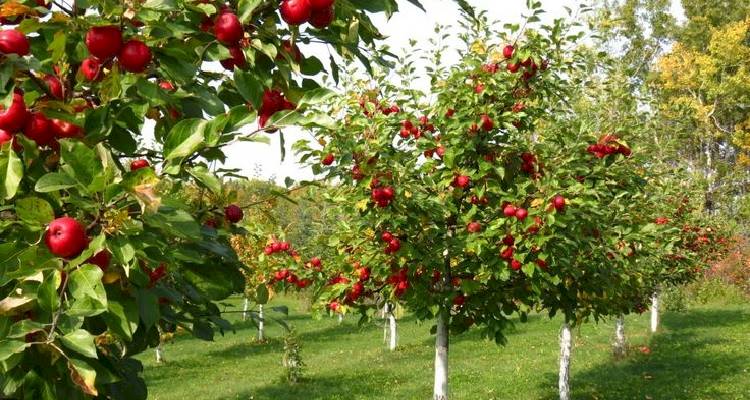
You should aim to remove some of the older wood each year, which encourages newer, better fruit-bearing wood to grow. You want an open structure that allows light to get to all the branches. Focus your pruning on areas that appear crowded.
Try to choose mid-sized branches to prune. You want to minimise the number of cuts you make. But you don’t want to cut down thick branches.
Plum Tree
Plum trees should be pruned in early spring to mid-summer. This is to protect them from silver leaf disease.
If your plum is trained to a specific shape, then it will require more careful pruning. Most plum trees are easy to maintain. Using secateurs, you should cut back the new growth to around half its length. Cuts should be made just above a leaf.
Any side shoots can be cut back to two or three buds above the start of the season’s new growth.
Bay Tree
Here are some things to keep in mind when pruning a bay tree. Bay tree pruning isn't necessary for the health of the tree. It is, however, useful for maintaining the shape you desire. Bay trees can tolerate both light and heavy pruning well, which is why they are often used for topiaries.
Bay trees used for topiaries are best pruned in summer. You should prune in the direction you wish the plant to grow.
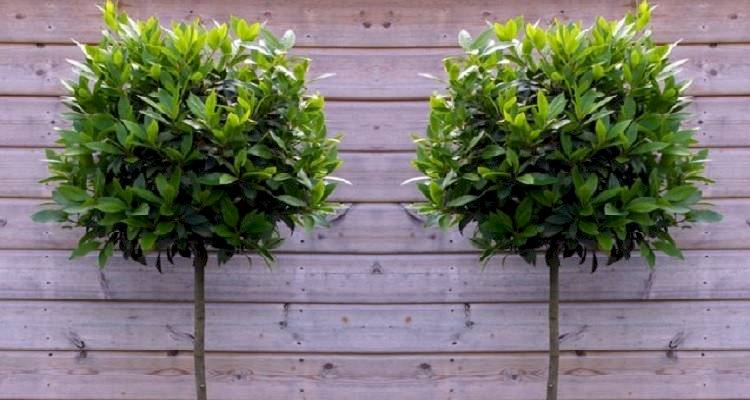
If the bay tree is growing as a shrub, then the best time to cut back is during spring and summer.
If any of the leaves have become damaged during winter, you can lightly remove these at the start of spring.
Magnolia Tree
Magnolia trees don’t need to be regularly pruned. There are some times when pruning is needed, and these will depend on the type of magnolia you have.
Deciduous
When you first plant the tree, you should take the opportunity to remove any weak or badly placed shoots.
Try to limit pruning to removing deadwood and watershoots. Any major pruning should be spread over a period of years as these trees can be slow to recover.
Any pruning should be done from mid-summer to autumn; otherwise, the cuts can bleed sap.
Evergreen Tree
Young trees can be shaped by the removal of lower branches if desired. Long young branches can also be trimmed back. Freestanding trees should be pruned in spring, and highly trained trees should be trimmed in summer.
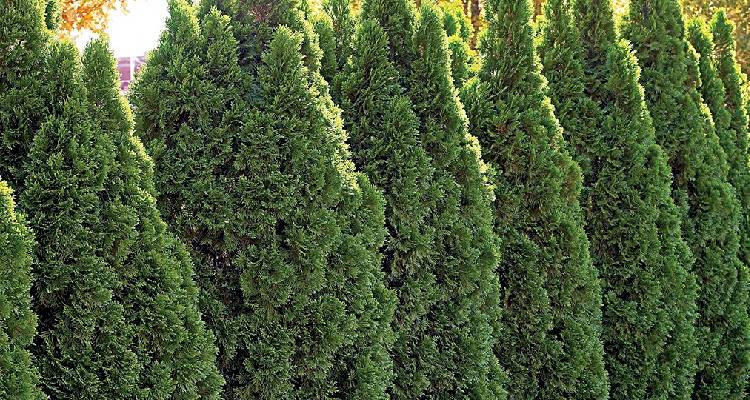
Wall Trained
New shoots should be tied at 45° in the first year. Then moved to a horizontal position in their second season. Any shoots that appear towards the wall should be removed, and outward-growing shoots should be cut back to no more than two leaves. Pruning should be done immediately after flowering.
Cherry Tree
Cherry trees should be pruned in early spring to mid-summer. This is to protect them from silver leaf disease. Light pruning should be done in early spring. Any heavy formative pruning should be left until summer.
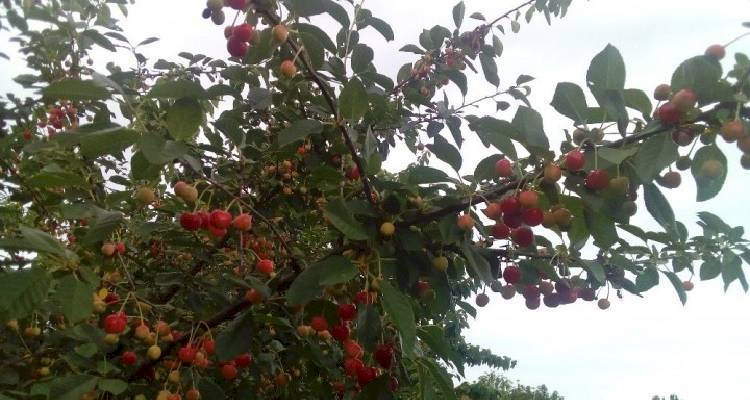
For an established tree, pruning should be limited to removing any problem branches. These include crossing branches, weak or diseased branches, and limiting any vertical growth.
Fig Tree
Figs are hardy plants and will require annual pruning. Pruning should be done during winter; otherwise, they are prone to bleeding.
Pruning should focus on creating an open structure. You should remove a few older branches. Try to reduce branches crossing over and aim for an even structure. The aim is to allow light to reach every branch.
Olive Tree
You shouldn’t prune olive trees until they are at least four years old. When it is time to prune the tree, you should do this work in late spring/early summer.
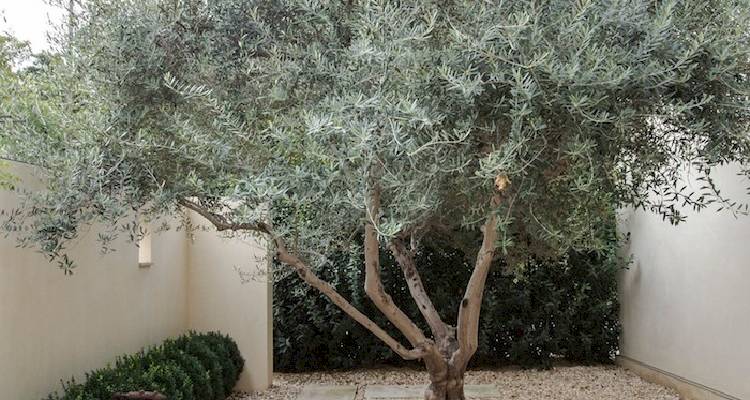
Pruning should be done to create an open structure that allows light to reach all the branches. You should aim to make as few cuts as possible, so consider your cut with care.
Pear Tree
Pruning a Pear tree is very similar to pruning an apple tree. The pruning should be done between November and March.
You should aim to remove around 10% to 30% of the canopy each year. This should be removed evenly from the whole tree, not just the top.
You should aim to remove some of the older wood each year, which encourages newer, better fruit-bearing wood to grow. You want an open structure that allows light to get to all the branches. Focus your pruning on areas that appear crowded.
Try to choose mid-sized branches to prune. You want to minimise the number of cuts you make. But you don’t want to cut down thick branches.
Lilac Tree
Lilacs require regular pruning from the time they are two years of age. This will keep them flowering and prevent them from becoming too tall.
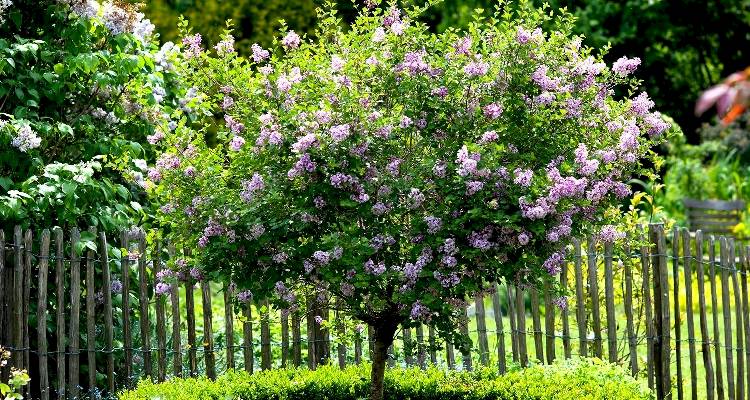
When trimming a lilac, it is best to trim whole stems, rather than just thinning out the top. Around a third of the branches should be removed. Spent blooms should be removed at the stem. Cutting away shoots that are near the ground will allow for good air circulation to keep the plant healthy.
When to Prune Trees
When is the best time to cut trees back in the UK?
The best time to prune most trees is late autumn and winter. This is because the trees are dormant at this time of year. Pruning at this time will promote the health of the tree. It won’t limit growth in the next season. It allows for easy removal of diseased limbs. Access is also easier as the ground is firm.
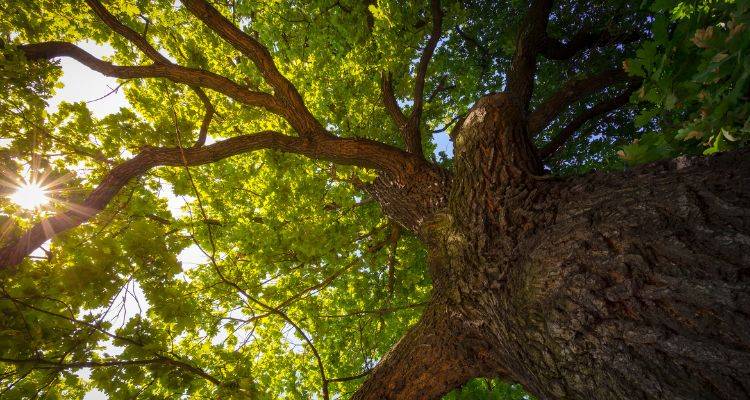
Pruning in spring or summer can limit the growth of the tree for that year. It can also lead to sap leaking from the tree. Light pruning is usually okay in spring and summer, but it is better for the health of the tree to leave it until autumn/winter.
There are a few exceptions to this general rule:
- Oak trees - Oaks are susceptible to oak wilt, which is caused by beetles feeding on freshly pruned areas. Pruning during late winter/early spring, between February and March, reduces the disease risk.
- Magnolia and walnut trees - These are best pruned in late summer to minimise sap bleeding as the flow is lower at this time. For walnut trees in particular, trimming at this time can also help to avoid walnut blight, which is caused by pruning during springtime.
- Plum trees - Trees prone to silver leaf disease, such as plum trees, should be pruned from April to July.
- Overgrown shrubs - Cutting in early spring (late February to early April) will help overgrown shrubs to rejuvenate while they're dormant, but this depends on the exact species.
- Summer-flowering shrubs - These are best pruned from February to April to give the shrubs enough time to grow fresh shoots in time for summer blooming.
Removing Tree Costs
Removing a tree is a big decision. They take years or even decades to grow, so they can't be replaced easily.
Why Remove a Tree
If the tree is dead or diseased, then you should remove it. This is for safety reasons. These types of trees can fall and cause injury when they do so.
You may also want to remove a tree because it is interfering with other trees, buildings, or utilities.
How to Remove a Tree
Large trees should always be removed by a professional. Removing any tree is a big job and will take at least a day to complete, even for a mid-sized tree.
Tree felling costs will depend on the size of the tree and its location. The average cost to cut down a tree is £500 to £800.
However, for very old, very large trees, the cost of tree removal could be as much as £1,000 to £5,000.
The tree removal cost you're quoted will generally factor in felling and limbing the tree, as well as removing the waste. You should also ask whether it includes tree stump removal or if this service costs extra.
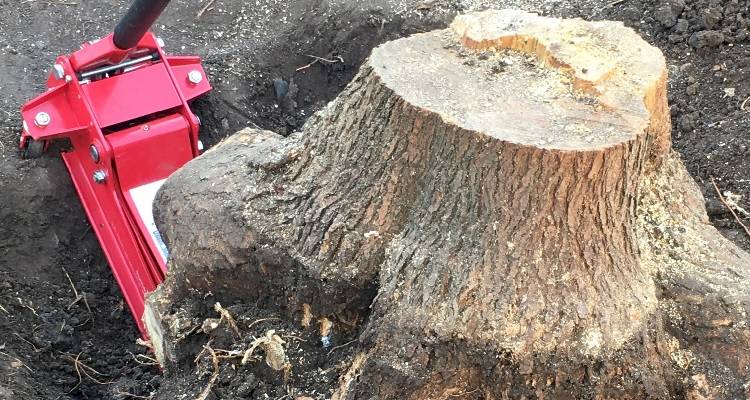
Bird Nesting Seasons and Tree Trimming Regulations
In the UK, the bird nesting season runs from February until August. During this time, you should be especially mindful of the wildlife protection regulations when you have a tree trimmer at your property, as it is illegal to disturb nesting birds.
Under the Wildlife and Countryside Act 1981, the following activities are classed as offences:
- Killing, injuring, or taking any wild bird from a nest.
- Taking, damaging, or destroying a wild bird nest while it's in use or while it's being built.
- Taking or destroying a wild bird egg.
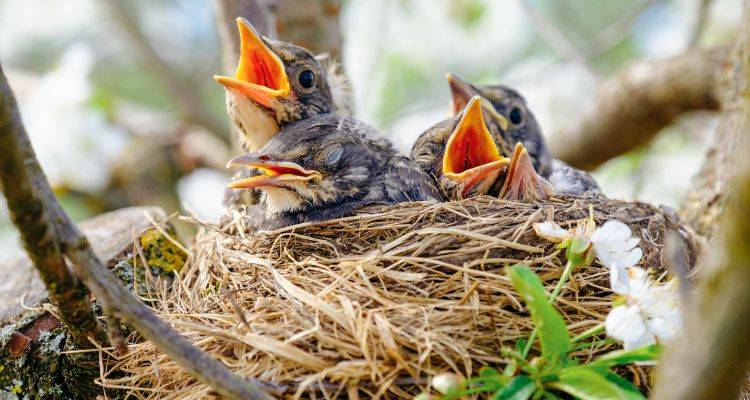
Breaching these bird nesting guidelines can lead to:
- Unlimited fines.
- Up to 6 months in jail.
- A combined fine and jail sentence.
If you need a tree trimmed during the nesting period because you have a diseased tree that's deemed unsafe, your tree trimmer will need to carry out an assessment to ensure any tree pruning activities will not disturb nesting birds. These regulations also apply to ground-nesting birds, and your arborist will also consider this when making their assessment.
In "extreme circumstances" where there is no other option available - such as when a tree poses a threat to public safety, air safety or where it might cause damage to crops - a licence can be granted to permit tree maintenance during nesting season.
You and your tree surgeon must adhere to tree trimming regulations to avoid committing offences.
Checklist: Finding & Hiring a Tree Surgeon
Tree surgeons carry out highly skilled and specialised work. It is not a job that anyone can do. There are several things to check before you choose a tree surgeon.
- Qualifications - A tree surgeon should be trained and hold qualifications for working at height, using a chainsaw from a rope and harness, and know how to use and maintain a chainsaw. At least one member of the team should be trained to perform an aerial rescue. These are not legal requirements, but any tree surgeon who does not have these sorts of qualifications does not have enough training.
- Get a Full Quote - Any tree surgeon should be able to give you a full quote in writing that outlines the scope of the work they will carry out. Make sure you are clear on what state they will leave your garden. A good tree surgeon will clean up after themselves. They will also need to see the tree in person before they can give you a quote. A quote over the phone is not a good sign.
- Ask About Insurance - Tree surgeons should have specialist insurance to carry out their work. Check they have this in place before you go any further.
FAQs
Who is responsible for trimming tree limbs?
What is tree pruning?
What are average tree surgeon prices?
What is an arborist?
What is the difference between tree trimming and tree pruning?
Sources
https://www.rhs.org.uk/plants/types/trees/pruning-guide
https://www.treehelp.com/pages/felling-the-tree
https://www.gardeningknowhow.com/edible/herbs/bay/cutting-back-bay-trees.htm



